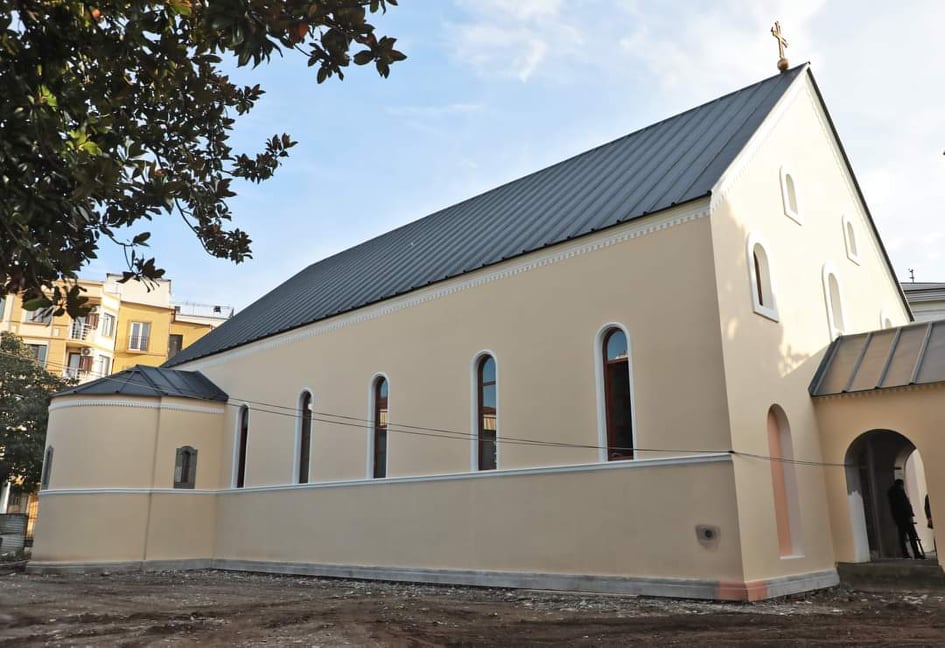

St. Theodore of Adjara Church
Batumi, 35 Konstantine Gamsakhurdia Street
Brief Description of the Monument:
Situated at the intersection of two streets and set deep within a courtyard, this large hall-type church was originally built for the Armenian Catholic community between 1874 and 1876. Today, it is in a damaged state. The church is rectangular in plan, extending from east to west, and is covered with a gabled roof. On the eastern side, it terminates in a pronounced semicircular apse. Smaller apses of similar shape are also located at the eastern ends of the north and south walls.
In the main apse, there is one large arched window in the lower section and four damaged, formerly arched windows above. Each of the smaller apses has two arched windows. Attached to the western end of the main structure is a rectangular annex with a gabled roof. On the western wall of this annex is a recessed arched panel containing a rectangular entrance—the church’s main door—elevated by three steps.
The smooth walls of the hall on the north and south sides are divided by large rectangular windows. Due to the deterioration of the plaster, the original arched contours of the windows are still visible—suggesting that the rectangular shapes are later alterations. The windows on the eastern, northern, and southern façades are unadorned, with the exception of a single unifying decorative element: a profiled horizontal belt running continuously along the lower part of the window line.
The main body of the church and the small apses are topped with profiled cornices—arched and crenellated in the case of the apses. The western annex features a triangular pediment outlined by a profiled frame, with a circular medallion in the center of the tympanum. Later additions have been attached to the building on its southwest and west sides. On the north, the yard is separated from Vakhtang Gorgasali Street by a metal fence.
Access to the interior was not possible, but the building is in a critical state and urgently needs restoration. While it does not possess high artistic value, the church holds architectural and urban significance for the structure and history of the surrounding neighborhood.